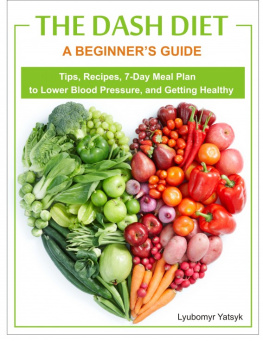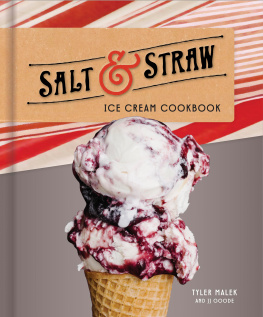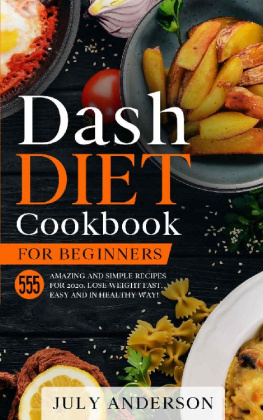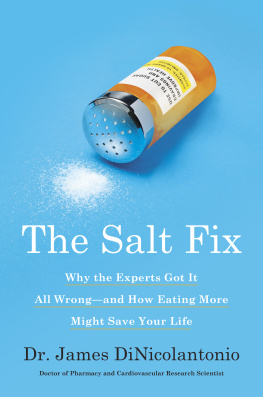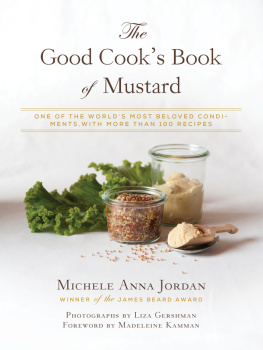
The
NO-SALT
Cookbook
Reduce or eliminate salt
without sacrificing flavor
David C. Anderson
and Thomas D. Anderson

Copyright 2001, David C. Anderson and Thomas D. Anderson.
All rights reserved. This book, or parts thereof, may not be
reproduced in any form without permission from the publisher;
exceptions are made for brief excerpts used in published reviews.
Published by
Adams Media, a division of F+W Media, Inc.
57 Littlefield Street, Avon, MA 02322
www.adamsmedia.com
ISBN 13: 978-1-58062-525-8
ISBN 10: 1-58062-525-8
eISBN: 978-1-44051-952-9
Printed in the United States of America.
J I
Library of Congress Cataloging-in-Publication Data
Anderson, Thomas D.
No salt cookbook : reduce or eliminate salt without sacrificing flavor / David C. Anderson and Thomas D. Anderson.
p. cm.
ISBN 1-58062-525-8
1. Salt-free diet--Recipes. I. Anderson, David C., 1942 II. Title.
RM 237.8.A534 2001
641.5'632--dc21 2001033538
This publication is designed to provide accurate and authoritative information with regard to the subject matter covered. It is sold with the understanding that the publisher is not engaged in rendering legal, accounting, or other professional advice. If legal advice or other expert assistance is required, the services of a competent professional person should be sought.
From a Declaration of Principles jointly adopted by a Committee of the American Bar Association and a Committee of Publishers and Associations
This book is available at quantity discounts for bulk purchases.
For information, call 1-800-289-0963.
CONTENTS
I. INTRODUCTION
We Still Eat Well. So Can You.
This book is a report from the front lines. The advice and recipes that follow are based on a quest for ways to make food taste good without salt that spans nearly two decades, along with a four-year effort to organize and expand upon it for publication, first on the Internet, now as a book.
The authors, the father a journalist, the son a self-taught chefapproach this task unapologetically as amateurs. Accepting that the physicians and nutritionists are right when they order a reduction in sodium intake for the management of a medical problem, how is the patient who loves food supposed to cope?
Other diet orders, if troublesome, are less challenging. Reducing cholesterol or fat, for example, means substitutions of ingredients or shifts in menus. Replace the butter with margarine; forget the cheeseburgers and ice cream; go for chicken, fish, fruits, and vegetables. You may have to give up on foods that have comforted you since childhood, but you can still go out to a restaurant with friends, still frequent familiar aisles of the supermarket. Most important, you can still make the food you are allowed to eat taste good to you in the conventional ways.
Its not the same when a doctor orders you to cut out salt. A quick investigation lays the basis for panic. Reduce sodium intake to 1,500 milligrams per day: Okay, take a calculator shopping and start checking the nutritional analyses printed on labels. Bread: 135 milligrams of sodium per slice. Butter: 85 milligrams per tablespoon. Bacon: 290 milligrams in two strips. Cheerios: 280 milligrams per cup. Cheddar cheese: 180 milligrams per ounce. Tuna fish: 750 milligrams in a six-ounce can. Mustard: 50 milligrams per teaspoon. Mayonnaise: 80 milligrams per tablespoon. Canned green beans, pasta sauce, and chicken noodle soup: 390 milligrams, 610 milligrams, and 980 milligrams in half a cup of each.
At this rate, youll hit the 1,500 milligram ceiling halfway through lunch. The reality sinks in: Whole sections of the supermarketvirtually all the processed foodsare now off limits. And 1,500 milligrams a day isnt all that strict. Some doctors want you below 750 or 500.
Restaurants are equally discouraging. McDonalds and Burger King now post nutritional analyses of their fare, and the sodium amounts are forbidding: 1,380 milligrams in Burger Kings Whopper with cheese, 1,070 in McDonalds Big Mac. Fish and chicken sandwiches exceed 1,000 milligrams at each place.
To handle the low-sodium diet, youll have to forget the fast food and think more than twice about the ethnic places youve learned to love over the years, especially the Asian restaurants that depend so much on soy sauce (1,319 milligrams per tablespoon). Higher-end continental and American cuisine offer some hope, but you have to be aggressive about ordering dishes prepared without salt, pinning down the waiter and the chef.
Home cooking offers the best hope for continued enjoyment of food, but here, too, the challenge is serious. A single teaspoon of table salt (sodium chloride) contains 2,132 milligrams of sodium, more than even a liberal daily limit, and you also need to count the sodium that occurs naturally in the food you prepare. These amounts are significant: 150 milligrams of sodium in 8 ounces of boneless broiled chicken, 180 milligrams in 8 ounces of broiled sirloin steak.
The arithmetic leads to an uncompromising bottom line: Cooking for yourself, you can get decent nourishment within the confines of a low-sodium diet, but given the naturally occurring sodium in food, you will have to do so without adding any salt whatsoever, either when you prepare the food or when you sit down to eat it. For all too many people, thats a devastating idea.
Do the doctors who order a low-sodium diet understand what it can mean? We wonder.
A young woman we know recently moved in with her aging parents, no longer able to live by themselves because of multiple medical problems. Attempting to prepare tasty meals, the daughter found herself stumped by the 750-milligram-per-day sodium limit her fathers doctor had imposed. They gave us no guidance, she says of her efforts to cope. I was just stumbling around, reading labels. She wound up preparing flavorless and totally monotonous combinations of rice and steamed vegetables day after day.
An older friend speaks despairingly of the low-sodium diet that reduced her cuisine to unadorned rice and chicken breasts. The restriction dealt a serious blow to her quality of life: Retired from a successful career as an educator, she now lives alone; sharing good food with friends had been a basic source of enjoyment.
Shortly after we began uploading salt-free recipes on our Web site a man wrote to us with startling gratitude. You have literally saved my wifes life, he declared. Since we found out she couldnt eat anything with salt in it she had almost stopped eating. The doctor warned her about weight loss, but it didnt help.
These are frustrating stories, because monotony, despair, and near starvation are wholly unnecessary for the sake of a salt-free diet.
Our own interest in a low-sodium cuisine began more than 20 years ago when David Anderson was diagnosed with high blood pressure and ordered off salt by his doctor. He began experimenting in the kitchen and embarked on the often frustrating hunt for salt-free products off the shelf. Several years later, his son Tom began to pursue a passion for cooking and brought his imagination and a fascination with gourmet cuisine to his fathers continuing quest for flavor.
While life without salt has meant the sacrifice of some foods we used to lovepastrami, hot dogs with sauerkraut, bacon for breakfast, the Easter hamit has also meant the discovery of new dishes that are just as satisfying, if not more so, through a process that is always creative and often fun. We feel that we eat very well, whether at home with our families or entertaining our friends. So can you.
Next page



